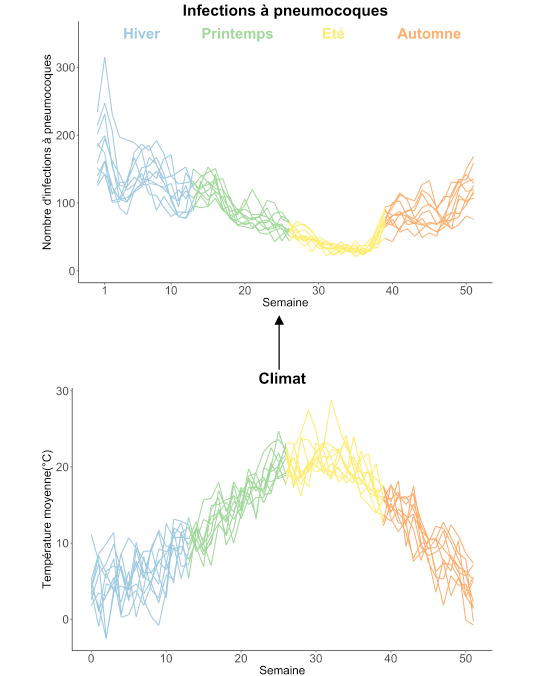Pneumococcal infections are still a global public health problem. Though striking, the seasonality of these infections remains a mystery for science. Researchers from the Institut Pasteur have finally unraveled the mechanisms behind the discontinuity of these infections.
The pneumococcus bacterium is responsible for severe infections (pneumonia and meningitis) and frequent deaths (almost three times more than car accidents in France), particularly in young children and the elderly. In temperate climates, pneumococcal infections are highly seasonal with a significant peak in winter, especially in the populations most at risk. By combining French epidemiological and meteorological data between 2001 and 2010, scientists from the Institut Pasteur Pharmacoepidemiology and Infectious Diseases Laboratory have revealed how much the climate, influenza infections and seasonal variations in contact with children (particularly at Christmas) impact the frequency of these infections. These findings suggest that measures that take into account these environmental conditions, or a public health policy that targets certain specific periods, could help to significantly reduce pneumococcal infections.

Source
Unraveling the seasonal epidemiology of pneumococcus, PNAS, January 14, 2019
Matthieu Domenech de Cellès1, Hélène Arduin1, Daniel Lévy-Bruhl2, Scarlett Georges2, Cécile Souty3, Didier Guillemot1, Laurence Watier1 and Lulla Opatowski1
1 Biostatistics, Biomathematics, Pharmacoepidemiology and Infectious Diseases (B2PHI), INSERM, Université de Versailles Saint-Quentin-en-Yvelines, Institut Pasteur, Université Paris-Saclay, Paris, France
2 Santé publique France, Saint-Maurice, France
3 Sorbonne Université, INSERM, Institut Pierre Louis d’épidémiologie et de Santé Publique (UMR-S1136), Paris, France





